Recently there was a post on ice plant that I found interesting but was mainly from the golfer´s points of view on the pro´s and con of this controversial ground cover. I would like to share my prospective from an Architect´s point of view and an overall more detailed perspective because in my opinion, ice plant is a viable tool for architects in the correct situation. I have been involved in one particular project in the north of Chile for more than ten years and have been experimenting and working with this ground cover extensively for the last five years trying to maximize the good attributes while keeping it playable and generally for the most part in out of play areas. This particular project is located in one of the driest parts of the planet with two to three inches of rain per year and those rains come in two of the winter months. The main advantage which everybody knows is erosion control and the fact that it takes very little water in a small amount of time to establish and then it needs nothing in water in a humid environment like the coast. My experience has been that it grows native in a lot of these areas and we only transplanted it, in a few specific areas but is found throughout the project. The photo below is a testament how the sand is constantly moving from the winds coming off the ocean and as a result the erosion that takes place over time.
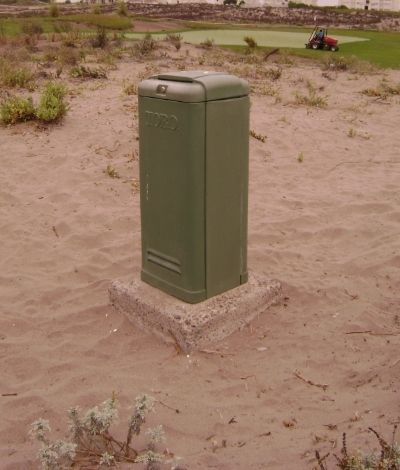
The area is associated with a micro climate that has only a few light frost per year and the summers are mild and short. Ice plant (Doaka in Spanish) does not tolerate hard frost or freezes but in our situation I consider it ideal because the infrequent light frost, set it back as does a few weeks of summer. Thus keeping it under control and preventing it from becoming super aggressive and over penal, if you happen to hit, a miss directed-bad shot and find your ball in one of these areas.

Typical lie that presents little or no problem but you still need to execute correctly.
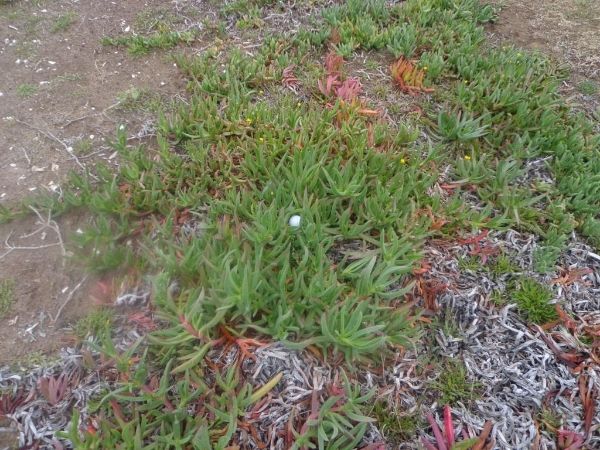
Bad luck lie that is more challenging and produce results of five to fifty yard recovery shots! Good idea to not over use but I think there are places where it adds excitement.
Once the plant begins to partially cover bare sand areas and starts to stabilize the sand in general, then other native plants begin to germinate and some of these will produce other shades of color and texture which results in a final product with iteresting contrast.
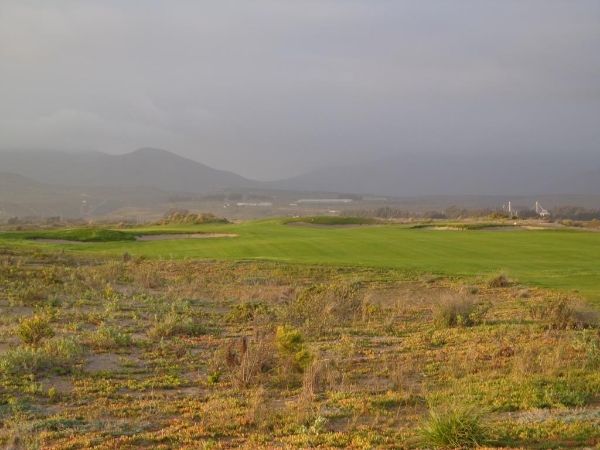
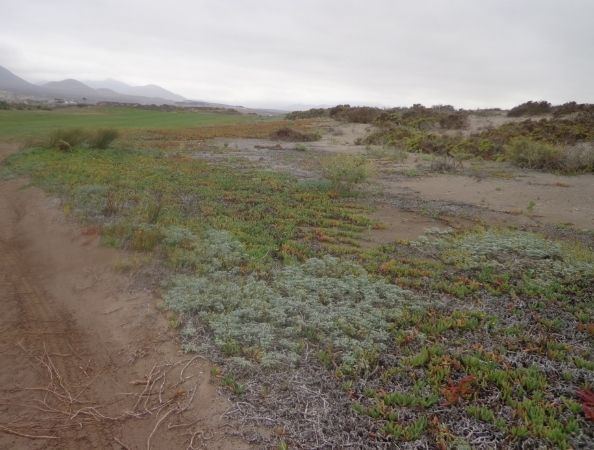
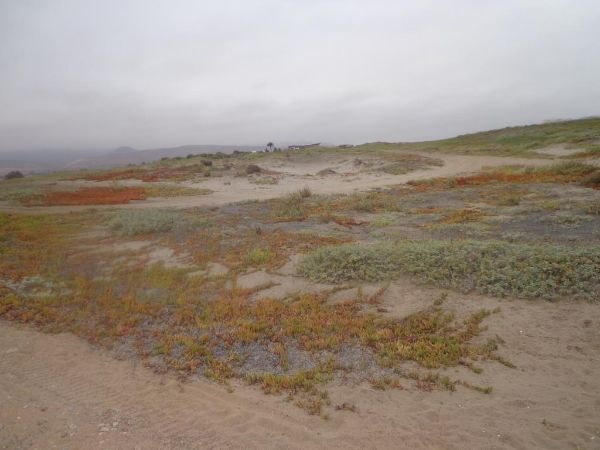
An extensive 80 yard waste area separating holes 17 and 18, still in natural development!
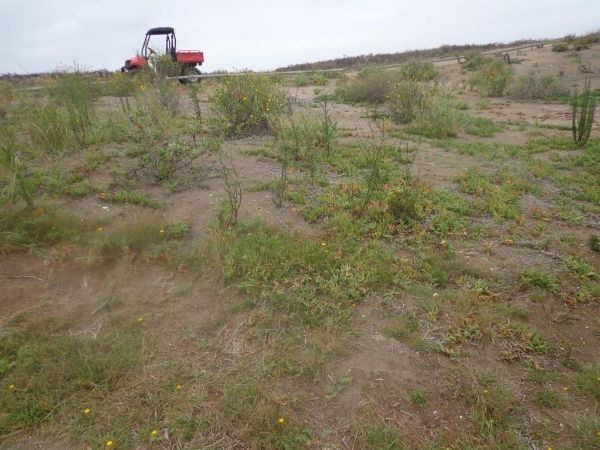
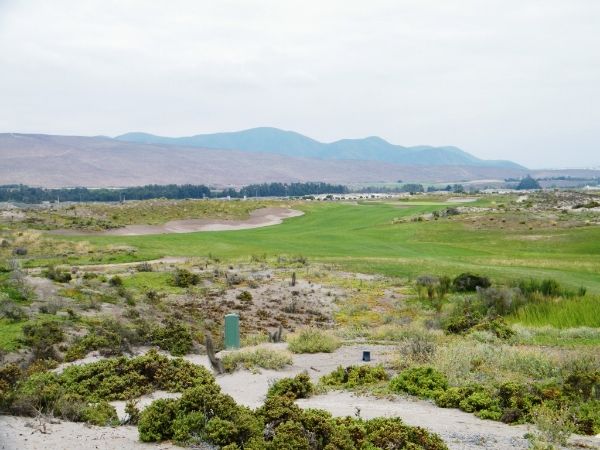
Another advantage that I have found is in these natural sandy conditions is that you can take advantage and create some huge natural sand bunkers and using the ice plant on the outside edge furthest from the playing area. This makes a great natural and disorganized border without the need of adding irrigation to the outside border.
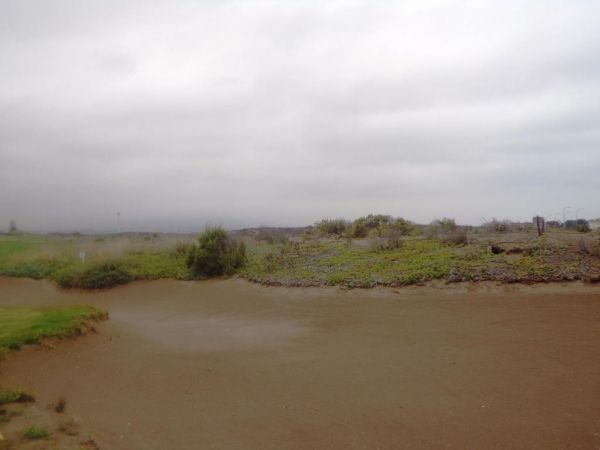
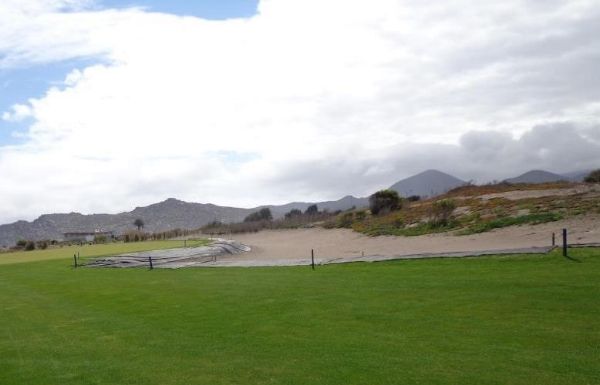
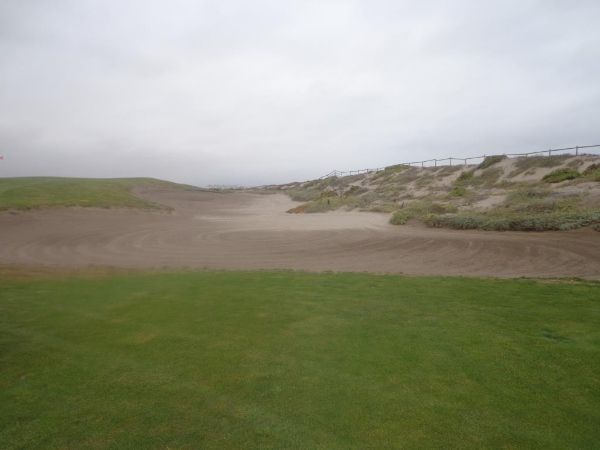
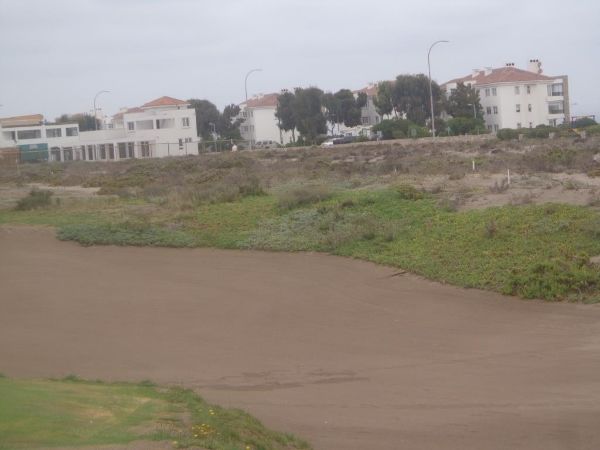
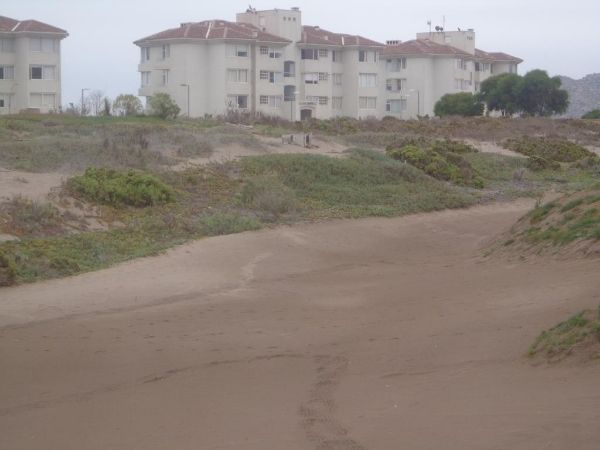
The character of the property in general, has three sets of main dunes and the routing was laid out in between the dunes in the mini valley´s. These dunes frame many hole and are for the most part, out of play but very visible and once again the ice plant works well in these out of play areas stabilizing the dunes without irrigation. The colors and contrast at different times of the year are incredible and sometimes there are five or six different colors at the same time.

The controversy starts when it is brought in to play but it is easy to get rid of if it ends up in an areas where you don´t want it to be. I have a few isolated areas where it comes into play and most of the time it is playable and the ball sits up, if the irrigation hits it, there are certain times of the year that it can get aggressive and the ball drop on down and the only thing you can do is punch it out. When this happens or it gets to this stage, we cut it with a rotary mower and in two week time it returns in a more acceptable form and once again playing and looking, like I want it to.
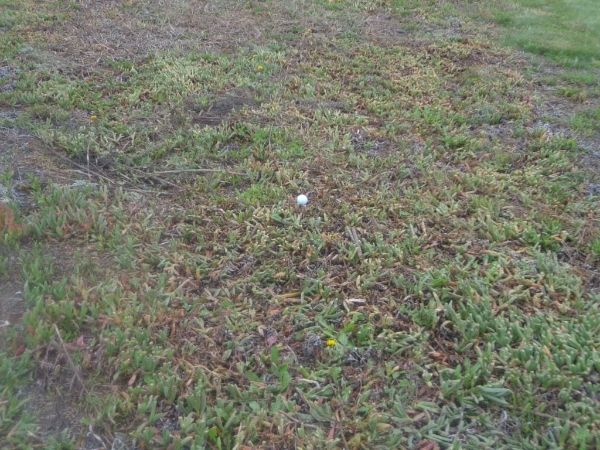
Recently cut!
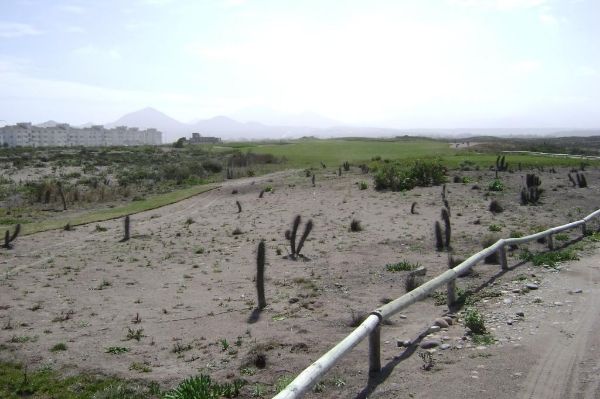
At first, I tried controlling it but found the final look vanilla, typical and boring! This area is between the back tees and the front tee.

Same area shown in the photo above allowed to a natural state! You can see how the ice plant comes and goes!
Another unusual practical application!
The photo below shows the seventh hole where we (Kelly and I) wanted to make a window with a view to the ocean. The developer added an extra apartment without consulting us and then called me and asked what could be done to protect the apartment because stray ball were creating a dangerous situation and they were getting complaints. They suggested a back stop baseball type screening or a lake. My first suggestion was tearing down the building and honoring the master plan but that went over like a lead balloon. So we added ice plant along the left side which you can see in the picture and we irrigated it to get it aggressive.
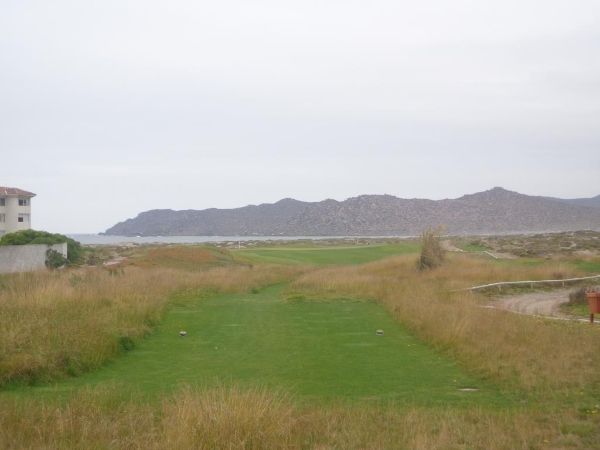
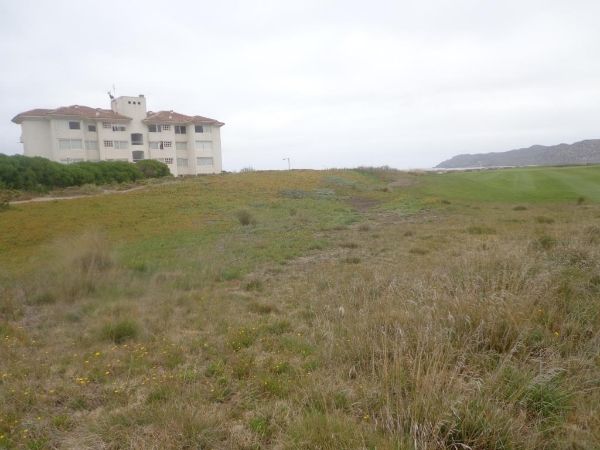
We created a river of ice plant acting as a buffer between the golf course and the apartment. Now for some reason nobody seem to go left on this hole!
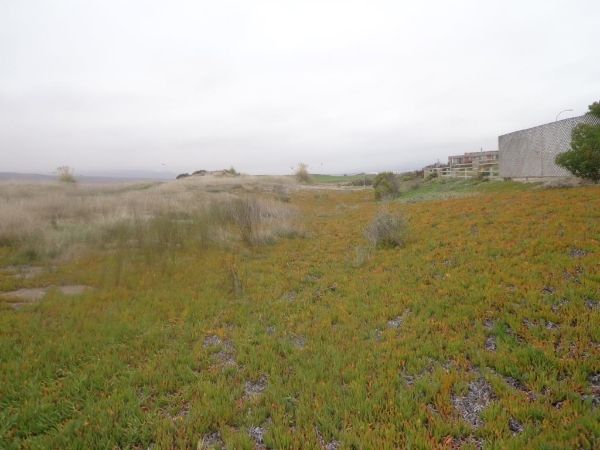
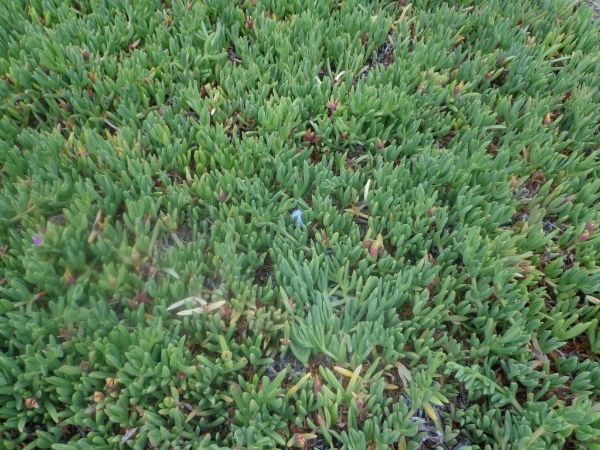
If they do go left, the smart golfer doesn´t even look for his golf ball, this kind of lie is the lie that you can break you wrist and take ten strokes to get out. It’s the only place on the course like this and it has served its purpose and I like it more than a lake or a baseball backstop. Granted my first recommendation was better!
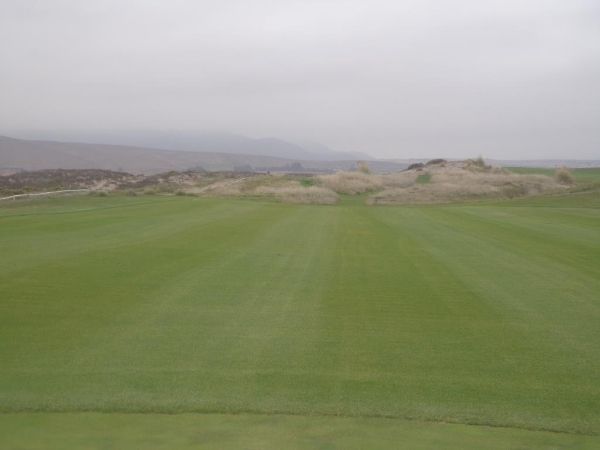
This is the same par three hole looking back on the tees. A different concept but not native by my definition because the majority of this area was planted. Teeing areas that weren´t spread out over great distances have this type of look. Should have I stuck to one theme for these areas???
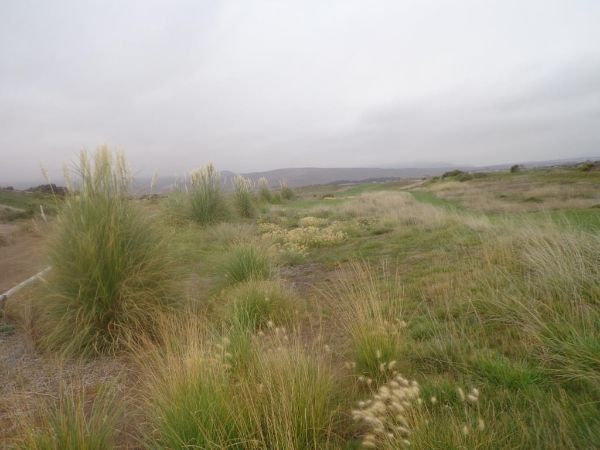
A couple more tee surroundings
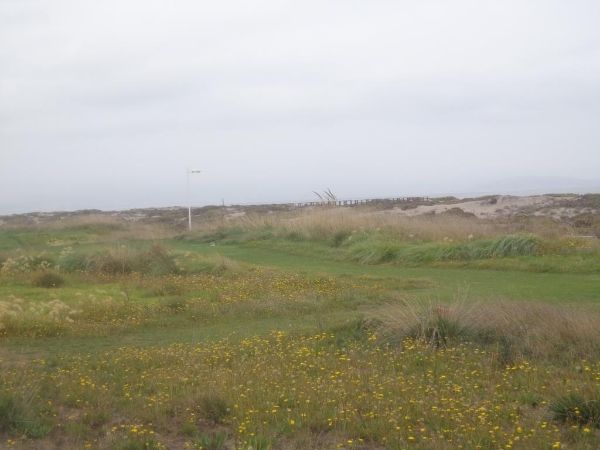
One more thing, nothing to do with ice plant but for me interesting
 [/URL
[/URL
The photo shows the natural mound to the right of six green. The shaper wanted to change the shape because in reality the mound was natural but the perception was not and we left it like that for the first five years. This mound ties into the tee surrounding of hole number seven with the river of ice plant. We fertilized it and added a couple of pampas grass plants as an introduction to the change in the upcoming theme of the tees surroundings.
[URL=http://s275.photobucket.com/user/agolf/media/DSC03605_zpse0896af8.jpg.html]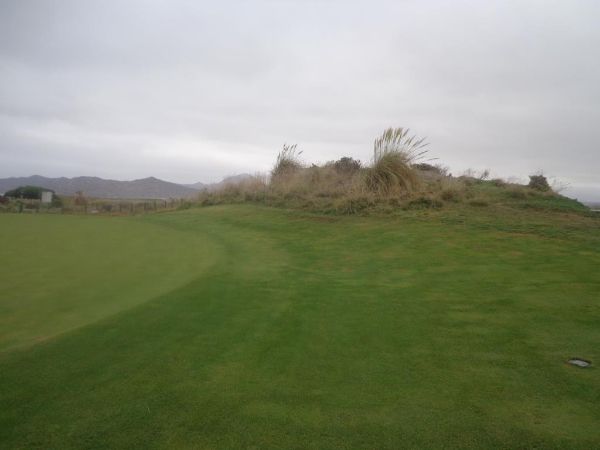
I like the final results and the mound ties in better without sticking out like a sore thumb and with no changes to the original shape.
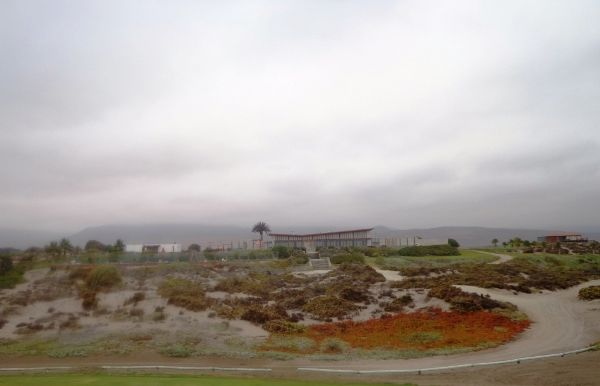
This is taken from the eighteenth green looking back towards the clubhouse. As you exit the course and head for the club you have to pass one last patch of ice plant, that kind of says, Hasta Luego Bebe!